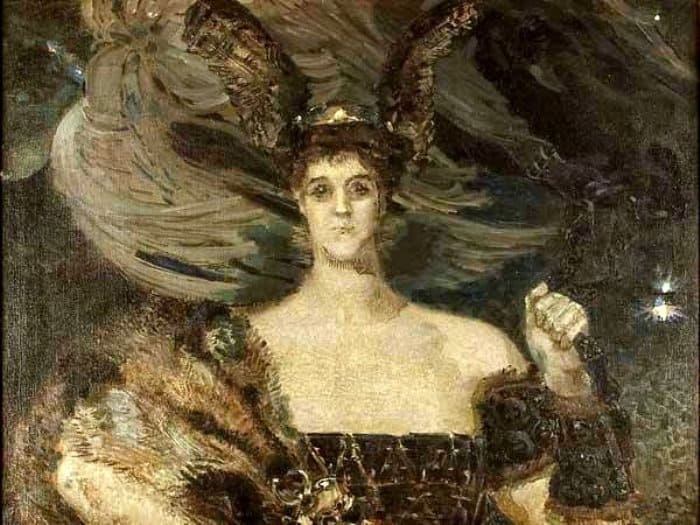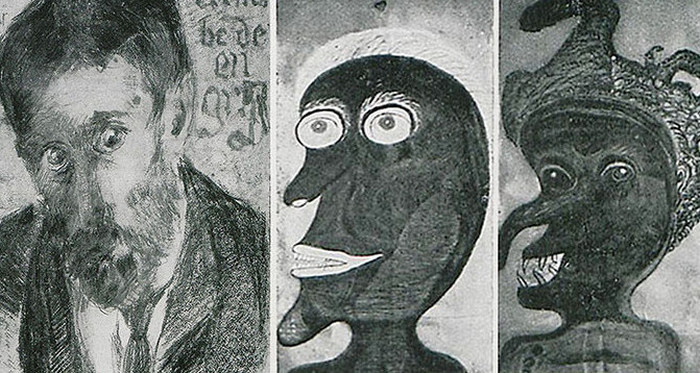VARIETIES OF LANDSCAPE GENRE
 Landscape (from FR. paysage – country area) – a genre of fine art where the main subject is nature.
Landscape (from FR. paysage – country area) – a genre of fine art where the main subject is nature.
As an independent genre landscape appeared in the VI century in Chinese art. Traditions of Chinese landscape painting have had a great influence on Japanese art.
In Europe, landscape as a separate genre appeared much later than in China and Japan. In the middle Ages, when only religious compositions had the right to exist, the landscape was treated by painters as a depiction of the habitat of the characters.
Gradually, the landscape went beyond other artistic genres. This was facilitated by the development of easel painting. In the creation of landscape genre played an important role masters of the Venetian school in the early XVI century.In Russian art landscape as a genre of painting appeared at the end of the XVIII century. The founder of the Russian landscape is considered to be Seeds Shchedrin (1745-1804).
The heyday of landscape painting marked the development of plein-air landscape associated with the invention in the XIX century of the method of production of tube paints.
Architectural landscape-a landscape in which the artist pays the main attention to the image of architectural monuments in synthesis with the environment
Architectural landscape became widespread in the XVIII century.
Landscape Veduta
Veduta-a genre of Venetian painting of the XVIII century, which depicts the cityscape as a panorama, in compliance with the scale and proportions.
The great representative of this style in painting is the Venetian painter Antonio Canaletto (1697-1768).
In Russia, the ancestor of the architectural Veduta were painters F. ya. Alekseev, M. N. Vorobiev, SF Shchedrin.
Heroic landscape-a landscape that shows the grandeur of the universe, nature is majestic and inaccessible to man.
The spectators, who have looked at the heroic landscape, should be content with the role of contemplators, enjoying the image and improving their minds.
French painter Nicolas Poussin founder of the heroic landscape.
Dutch landscape
The Dutch landscape for the first time originated in the works of such masters of Haarlem, like van Goyen, De Molen and van Ruisdael.
Most Dutch landscapes are characterized by a muted color, consisting of light silver, olive-ochre, brownish shades, close to the natural colors of nature.
The Dutch were the first to depict individual motifs of nature, often conveying views of a particular area. In contrast to the academic landscape painters, who embodied the images of nature in a conditionally ideal aspect, the masters of the Dutch landscape convey the modest nature of Holland as it is, without embellishing it.
Mountain landscape
Mountain landscape-a kind of landscape in which the main subject of the image are mountains, mountain peaks, mountain lakes, mountain rivers and mountain waterfalls.
Urban landscape
Urban landscape-a kind of landscape in which the main subject of the image are city streets, buildings.
Idyllic landscape Idyllic landscape-idealized landscape, which tells about the perfection, harmony and fullness of life of ordinary people, their direct links with nature.
The idyllic landscape is characterized by grazing herds, cool streams, trees with dense crowns, meadows, birds, ancient ruins, etc.
Claude Lorraine is the ancestor of the idyllic landscape.
Industrial landscape
Industrial landscape-the Soviet version of the genre cityscape, which depicts the romance of the restoration of the national economy, the construction of large industrial facilities.
One of the founders of the industrial landscape direction is considered to be Konstantin Bogaevsky.
Genre interior
Interior (derived from FR. intérieur-interior) – a kind of landscape painting, in which the subject of the image is the image of the interior of the room.
Historical landscape
Historical landscape – a landscape that depicts historical events using the architectural and sculptural monuments associated with those events.
Historical landscape revives the memory of the past and gives it a certain emotional evaluation.
Capriccio Harbor at dawn with fishermen, statue and views of the city. Marco Ricci
Capriccio (derived from ital. capriccio, literally-whim, whim) – architectural landscape-fantasy.
The most famous artists who wrote Capriccio: Francesco Guardi, Antonio Canaletto.
Space landscape
Cosmic landscape-the image of outer space, stars and planets, galactic landscapes, worlds of the future.
A romantic landscape a Cosmopolitan landscape is a landscape in which the artist depicted an imaginary landscape in the Italian style.
Cosmopolitan landscapes enjoyed great popularity in Holland in the XVII century.
Forest landscape
Forest landscape-a kind of landscape in which the main subject of the image is the image of the forest.
Painting forest landscape
Lyrical landscape, the landscape of mood, Lyrical landscape, a landscape of mood.
In the lyrical landscape depicted nature is spiritualized by the invisible presence of man.
Seascape
Seascape, Marina (derived from FR. marine, ital. marina, from lat. marinus-marine) – a kind of landscape in which the main subject of the subject of the image is the sea, coastlines and rocks, scenes of naval battles or other events taking place at sea.
Seascape was widely spread in the XVII century in the country of seafarers and fishermen – Holland. The best marine painters of the time were V. van de Velde, S. de Vlieger, J. Porsellis, J. van Ruisdael.
Park landscape
Park landscape-a kind of landscape in which the main subject of the image are gardens, parks, squares, alleys and other recreational people.
Picture a green landscape
Open-air landscape-a landscape written in the open air (open-air).
Flat landscape
Plain landscape-a type of landscape in which the main subject of the image are the plains.
Romantic landscape-a landscape that captures the rebellious beginning, disagreement with the existing order of things, the desire to rise above the ordinary, to change it.
Thunderclouds, swirling clouds, gloomy sunsets, wind riot – the motives of the romantic landscape.
The brightest representatives of the romantic landscape in England were Joseph Mallord William Turner and John constable, in Germany Caspar David Friedrich.
Rural landscape
Rural landscape-a kind of landscape, which depicts the poetry of rural life, its natural connection with the surrounding nature.
Tonal landscape Foundation landscape almost monochrome landscape.
Jan van Goyen, Salomon van Ruisdael and Peter de Molain are representatives of the tonal landscape that appeared in the late twenties of the XVII century.
Genre exterior
Exterior-a kind of landscape painting, in which the subject of the image is the image of the appearance of the room.
Epic landscape Epic landscape
The epic landscape is characterized by majestic pictures of nature, full of inner strength and dispassionate calm.
A striking representative of the epic landscape was M. K. Klodt, who sought to create a landscape-a picture that represents the viewer a holistic image of Russia.
Urban landscape
Urban landscape-a cityscape that depicts modern megacities with large buildings and skyscrapers.
Golden autumn is one of the most beautiful seasons of the year and therefore often found in the works of Russian landscape artists.
The theme of winter is widespread in the art of Northern Europe.
In medieval artistic culture images of winter were more often included in the cycles of months rather than seasons.
Each month had its own set of labors and amusements. As for the winter months, the most characteristic of their occupations were hunting, firewood, slaughtering pigs, entertainment also included skating and playing snowballs.
The ancestor of the winter landscape was the miniature “Month of February” Limburg brothers.
A huge influence on the development of the winter landscape had the work of the great Dutch painter Pieter Bruegel the Elder.
Winter landscape in Western European painting reaches its peak in the painting of the Dutch masters of the XVII century.
Dutch winter landscape has become a kind of hallmark of Holland.
Spring landscape is often found in the works of artists, as spring is a symbol of love, awakening, renewal and youth.
Russian artists depict in the spring landscape the tenderness of awakening nature from winter sleep – in the bright colors of the sun, reflected in the brilliance of melting snow; in the rich colors of the leaves, grass and flowers of spring trees stretching to the sun.




